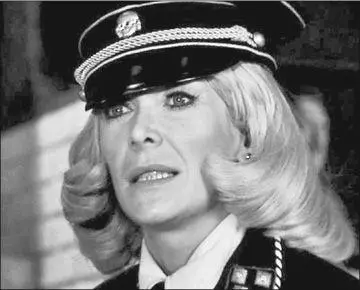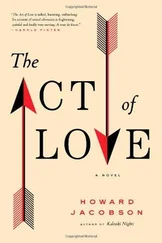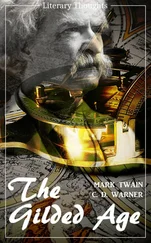Jorge Semprún, another Buchenwald prisoner who almost certainly never laid eyes on Ilse Koch, calls up her image in his novel The Long Voyage, published in 1963, more than thirty years before Literature or Life . Following long descriptions of the brutal train ride to Buchenwald, Gerard, Semprún’s narrator, finds himself in a small-town café ten years after liberation with Sigrid, a young, “beautiful” German woman with “short hair and green eyes.”
Gerard has questions, things he needs to know from Sigrid. Just who is she, what were her parents doing ten and twenty years ago? Perhaps she is the daughter of “Dr. Haas,” a “Gestapo character.” She puts out her cigarette and asks, “Why are you treating me like this?” Her father was not “Dr. Haas,” he was not in the Waffen-SS, not any Totenkopf. Gerard keeps on, saying well, of course Sigrid’s father could not have been a Nazi “because there were never any Nazis.”
She shrugs this off, says he’s drunk, inquires why he is “sad.” It is the dim openness of the question, the alluring naiveté of her green-eyed face, that makes Gerard wonder: could it possibly be that Sigrid truly doesn’t know about the hangings on Sunday afternoons in the Ettersberg woods, “beside the electrified barbed wire, the village beneath its quiet smoke, the winding road and the green, fertile Thuringian plain”?
Then they are in each other’s arms, entwined in what Gerard calls “the burning tension… between the weight of this past and the refusal to remember this past.” Her face is “smooth,” “polished,” and “eternally fresh,” as if “washed by centuries of slow, Nordic rains.” Her body is “perfectly suited for the appetite of juvenile perfection which vibrates within each of us.” It is a face and body, Semprún writes, that has been “reproduced tens, perhaps thousands of times in the women’s magazines” as if only “to make us forget the body and face of Ilse Koch, that straight, stocky body planted solidly on her straight, sturdy legs, that harsh, sharp, incontestably German face.”
Years after liberation, Gerard is still held captive by the image of Ilse Koch, with her “iron gray eyes” fixed on the naked torso of her human prey, her gaze “already cutting out that white, sickly skin along the dotted lines of the tattoo which had caught her attention… picturing those bluish lines, flowers or sailing ships, or snakes… on parchment-like skin.” It is the picture of Ilse Koch, “reclining on a couch” surrounded by adoring Waffen-SS officers, all of them bathed in the post-human light of her lampshades, that must be banished, Gerard says, if he will ever fully return to the living.
It is not unlike the drama Semprún will write about thirty years later in Literature or Life, the story of how Albert Rosenberg, a.k.a. “Rosenfeld,” saved him from limbo. The hope here is that Sigrid (and who knows how many Sigrids before and after) with the softness of her unmarked skin will somehow rescue Gerard/Semprún from das radikal Böse of Ilse Koch’s echoing laughter as she surveys her lampshade collection, “gathered like shells at the seashore on a weekend,” restoring the narrator to a world where love and untainted sex are possible.
Many people of the post—World War II generations got their first look at Ilse Koch, or at least her facsimile, in one of the now vanished movie theaters on New York’s Forty-second Street and in similar “grind houses” throughout the United States. Few films outsleazed Ilsa, She Wolf of the SS . Shot on the set of the cheery prisoner-of-war camp television comedy Hogan’s Heroes and starring the spectacularly endowed 37D-22-35 Dyanne Thorne, Ilsa, She Wolf of the SS takes a number of liberties with the Ilse Koch story. [22] Long before her surrogates lit up the screens of American grind houses, the sexual legacy of Ilse Koch was a sub-rosa sensation in Israel. For a whole generation of horny Israeli teenage boys, vivid comic books depicting female SS officers abusing camp prisoners were just about the only pornography available. The books, called “stalags,” followed similar plotlines to the Ilse film: sadistic, busty camp guards decked out in full bondage gear tortured prisoners until the underlings rose up to kill the vicious women, usually raping them along the way. Since Ilse Koch was the worldwide model for the evil Nazi sexual predator, it would be fair to say her image was at least the initial inspiration for these cheesy but undeniably compelling books. The fact that the Holocaust was rarely discussed in Israel prior to the Eichmann trial no doubt added to the subconscious appeal of the works. A film documenting the phenomena, Stalags: Holocaust and Pornography in Israel, played at the 2007 Jerusalem Film Festival, engendering much controversy.
Far too immoderate a presence to be a mere Kommandant’s spouse, Thorne’s Ilsa functions as a Nazi Dr. Moreau, serving as both the Kommandoführerin and head doctor of Medical Camp No. 9. With this expanded portfolio, Ilsa eschews such ho-hum Third Reich medical practices as mass sterilization in favor of pet projects like a series of experiments bent on proving that women can tolerate more pain than men. While the apparent goal of breeding a race of Ilsa-like dominatrix Amazons to serve in the front ranks of the Reich’s push for world domination remains unfulfilled, the tests do allow for a few extended, sapphically oriented S&M scenes. By night, Ilsa, an allpurpose Hexe when it comes to the unholy mixing of sex and death, orders male prisoners to her swastika-bedecked boudoir. Those who do not satisfy her are killed or merely castrated, depending on how close they bring her to orgasm.
Since Chaplin first pranced with his globe in The Great Dictator, mockery of Nazi leaders has been a staple of American popular culture. Why simply have a sleepy village attacked by zombies when you can dress the undead in SS uniforms and make them Nazi zombies? Few Reich figures, however, have provided as much cartoon mileage as Ilse Koch. Although offering few of the “fascinating fascist” contradictions inherent in a dashing character like Leni Riefenstahl, the plump Dresden secretary still supplies much fertile study territory to those seeking to explore the male fantasies that suffuse both the rise and fall of the Reich. Scholars like Alexandra Przyrembel, in her aptly titled essay “Transfixed by an Image: Ilse Koch, the ‘Kommandeuse of Buchenwald,’” say Koch got a raw deal because she was one of the few recognizable females in the Nazi Party. The point appears irrefutable. Is it any surprise that in 1951, with so many high-ranking Nazis already restored to positions of economic and political power, Ilse Koch was again sentenced to life imprisonment in a German court where she was described as a “diabolical female,” a “red-headed cocotte,” and a “robot of cruelty”? When the defendant broke down in her cell, sobbing, “I am guilty! I am a sinner!” Time magazine tastefully described the scene by saying “the fat-faced Bitch of Buchenwald… no longer the doll-eyed ruminant, collapsed in a hysterical heap.” Who, after all, could be a better scapegoat than Ilse Koch? Shortly after her conviction, Neues Deutschland, the Party-approved East Zone newspaper, wished good riddance to the “symbol of that period of the deepest disgrace and humiliation of all decent Germans.” But the transfixing image of Ilse Koch, like the lampshade, did not disappear. The cartoon was too compellingly drawn to fade away.

Dyanne Thorne in Ilsa, She Wolf of the SS
Reached at her Las Vegas home, Dyanne Thorne, now in her seventies and “busier than ever,” says she knew “very little” of Ilse Koch when she agreed to take the Ilsa part. “I knew she was something of a despicable psychopath, a totally terrible person. I knew something about the lampshades. We read about that in the newspapers when we were little. That scared me, the idea I was going to be her .
Читать дальше













